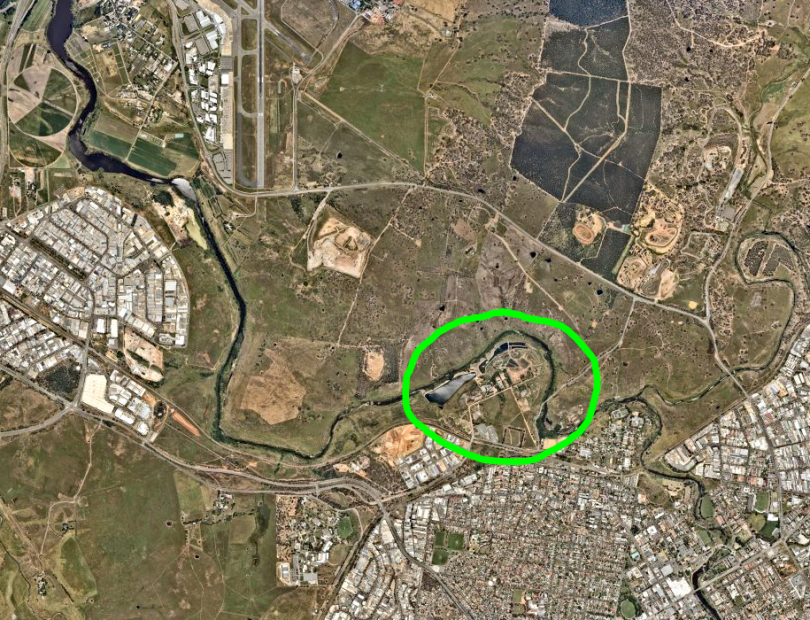
One of the triangular sludge ponds at the Queanbeyan sewage treatment plant. Photo: Supplied.
An environmental impact statement has been prepared to assess the impact of sewage discharge into Lake Burley Griffin as part of a major upgrade to Queanbeyan’s ageing sewage treatment plant.
The Queanbeyan sewage treatment plant, built in the mid-1930s on a section of land leased from the ACT Government, has between three to five years of effective service life remaining and is no longer fit for purpose due to the growing populations of Queanbeyan, Jerrabomberra and Googong.
The sewage treatment plant treats Queanbeyan’s sewage before the discharge of treated effluent into the Molonglo River, which flows to Lake Burley Griffin.
The plant is located on about 4.7 hectares of land behind the suburb of Beard, an industrial area that sits just inside the ACT border.

The Queanbeyan Sewage Treatment Plant which sits adjacent to the Molonglo River. Photo: Supplied.
A scoping report prepared by Queanbeyan-Palerang Regional Council (QPRC) identified several options in July 2019, with the preferred option being to upgrade the plant on its current site. It has been estimated it will cost $140 million to design and build the new sewage treatment plant.
The report said the existing sewage treatment plant was designed for a population of 34,500 but is currently servicing about 50,000 people. The proposal aims to increase the capacity for up to 75,000 people.
“While maintenance and works are regularly undertaken, the plant is no longer fit-for-purpose. A significant works program is required to address issues including structural failure, equipment obsolescence and maintenance issues, as well as refining the process train,” the report states.
Issues with the current plant have been known since 2011 when QPRC engaged Hunter Water Australia to upgrade the treatment plant. Since then, the condition of assets on site has continued to deteriorate while the population has increased, resulting in the design capacity of the existing plant being nearly exceeded.
“Some of the existing equipment is obsolete and there are issues with maintenance of the existing plant. There is the potential that the current process is unable to meet more stringent discharge criteria as is proposed in the future,” the report says.
The scoping report also identified a risk that lagoons within the treatment plant may fail due to severe flooding, as occurred in 2010. There is also a risk that discharge could make its way from the Molonglo River into Lake Burley Griffin.
There is known contamination on the site due to the burial of solids and screenings, which likely includes stockpiles of biosolids, wet and dry sludges, screens and grit, onsite material burial, possibly asbestos, asbestos-lined pipes and general waste disposal. Biosolids are likely also to contain metals. Contamination assessments will be undertaken as required.
QPRC addressed these concerns and others in the environmental impact statement sent to the ACT Government’s Environment, Planning and Sustainable Development Directorate (EPSDD) last Friday (8 January).
The draft EIS will be publicly notified on the EPSDD website for a minimum of 20 working days once lodged. The public will have an opportunity to view the proposal and make representations at that stage. The proponent, QPRC, is then required to address comments on the draft EIS in a revised EIS.
Original Article published by Michael Weaver on The RiotACT.







